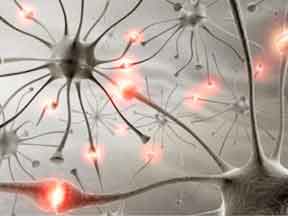EMDR - A Powerful Tool for Healingby Margery Silverton, LCSW-C |
|
EMDR stands for “Eye Movement Desensitization and Reprocessing.” It is an approach to the treatment of anxiety, stress, and trauma related problems like Post Traumatic Stress Disorder. It can also be used as a tool to enhance performance in arenas such as public speaking, the performing arts and sports.
EMDR was created by Francine Shapiro, a clinical psychologist who made a rather serendipitous discovery when she realized that certain repetitive eye movements gave her relief from anxiety and troublesome thoughts. As she continued to test the method on others, she discovered that they almost universally experienced relief from symptoms when she directed them in simple eye movements. They reported relief from depression, anxiety, traumatic memories, obsessive thinking, intractable guilt and grief, and a host of other conditions treated regularly by psychotherapists. |
 |
Some therapists continue to use eye movements, while others incorporate other methods of bi-lateral brain stimulation, such as alternate hand tapping with an instrument called a “thera-tapper” or sound recordings which alternately stimulate the right and left hemispheres of the brain. The bi-lateral movements occur while the patient tunes into the troubling issue, related memories, visual images, negative beliefs, and body sensations.
When an event is stored in short term memory, no matter how long ago the actual event happened, it causes the symptoms associated with ongoing, immediate trauma. Chronic anxiety, re-living of the event through flashbacks, nightmares, an intensified “startle” response, guilt, anger, and inability to think toward the future without fear of another traumatic event, are all symptoms of Post Traumatic Stress Disorder. Traumatic memory is different from other forms of memory in that the brain processes it differently. Thoughts, images, feelings, body sensations, and the meaning of the event tend to get disconnected from the verbal processing centers of the brain. It is thought that EMDR and other forms of bi-lateral stimulation help to shift the processing of the traumatic issue from short-term to long-term memory. This shift changes how the trauma is experienced in the body and allows for the development of a meaningful, coherent narrative.
When EMDR first came on the therapy scene, it was discounted as too good to be true. In recent years, brain research is showing that EMDR actually helps to develop new neural pathways, thus increasing energy flows across the hemispheres of the brain.
This change in neural wiring is accompanied by a sense of release, a feeling of peace and acceptance, and a deeper appreciation of and compassion for oneself. The research is now validating the office experience of psychotherapists and their patients for the past ten years . . . EMDR is a powerful tool for healing.
To read a different Brief Description of EMDR Therapy and about the 8 Phases of Treatment, |
|

